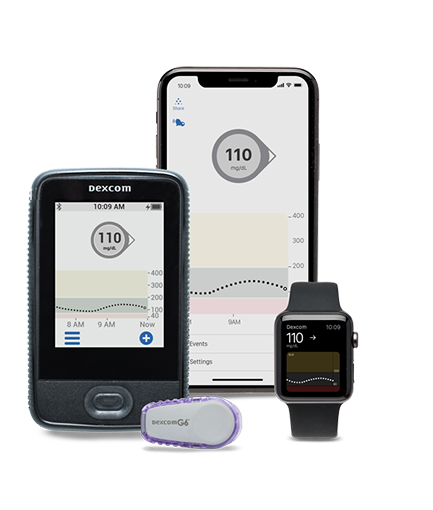The Libre and Dexcom G6
I'm excited. Optimistic too perhaps.
For the first time in the history of diabetes care, we now have options to offer patients aside from the tried-and-proven age-old pricking the finger with a lancet, then getting a small drop of blood on the glucometer strip.
True, in the larger scheme of things, this isn't a big deal. However, for patients on basal-bolus insulin programs, testing 4 times a day is a necessity. And for many, it would be a lifelong deal. And while CGMS (continuous glucose monitoring systems) have been around for years, they are by no means perfect; they often are inaccurate enough to replace glucometer testing, and require glucometer readings several times a day for calibration. Years ago, if you asked me if there would be better options, I'd have said no.
However, in the last few months, the FDA has approved several newer devices that is likely going to change how we manage diabetes.
First off, the Freestyle Libre, which is the first no-calibration continuous glucose monitoring system in the USA. A rather simplistic and minimalist device- you insert it on the arm- and once it warms up, it's good to go. You can wear it for 10 days, during which when you wish to check your glucose level, you just take the reader and swipe the sensor on your arm, and it reads the glucose value. So instead of 4 pricks a day, you just swipe the reader 4 times a day. Pretty neat, and definitely cheaper than the existing CGMS systems. Though this will not preemptively warn a user of hypo or hyperglycemia, and does not work with any insulin pumps- so I see this as a great replacement for the glucometer, but might not be the best device for my patients with severe hypoglycemia and hypoglycemia unawareness. This is new, but I have over a dozen patients already on it, and most love it and find this life-changing.
Then more recently, the FDA approved the Dexcom G6 CGMS. This too, is Dexcom's very first device that does not require calibrations with the glucometer, and can be worn for 10 days. This is a more sophisticated system, and hence will likely cost a lot more than the Libre (not in the market yet- probably soon). However, this is expected to work with insulin pumps and can work with smart phones, and one should be able to program in glucose thresholds for alarms, and could be a lifesaver for some people.
Professionally, I'm excited about what the future will hold for my patients suffering from this horrible disease. There was a time many would scoff at the prospect of a closed-loop CGMS-insulin pump system, long considered to be the holy grail in type 1 diabetes. But with how diabetes technology seems to be evolving rapidly in the last 5 days, the future in theory seems bright. Now, if only these things are more affordable to more patients.... but that's a different battle to be fought.



0 Comments:
Post a Comment
<< Home